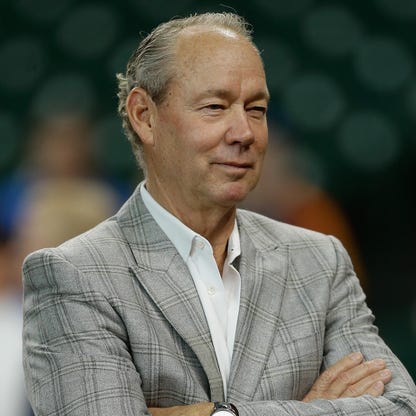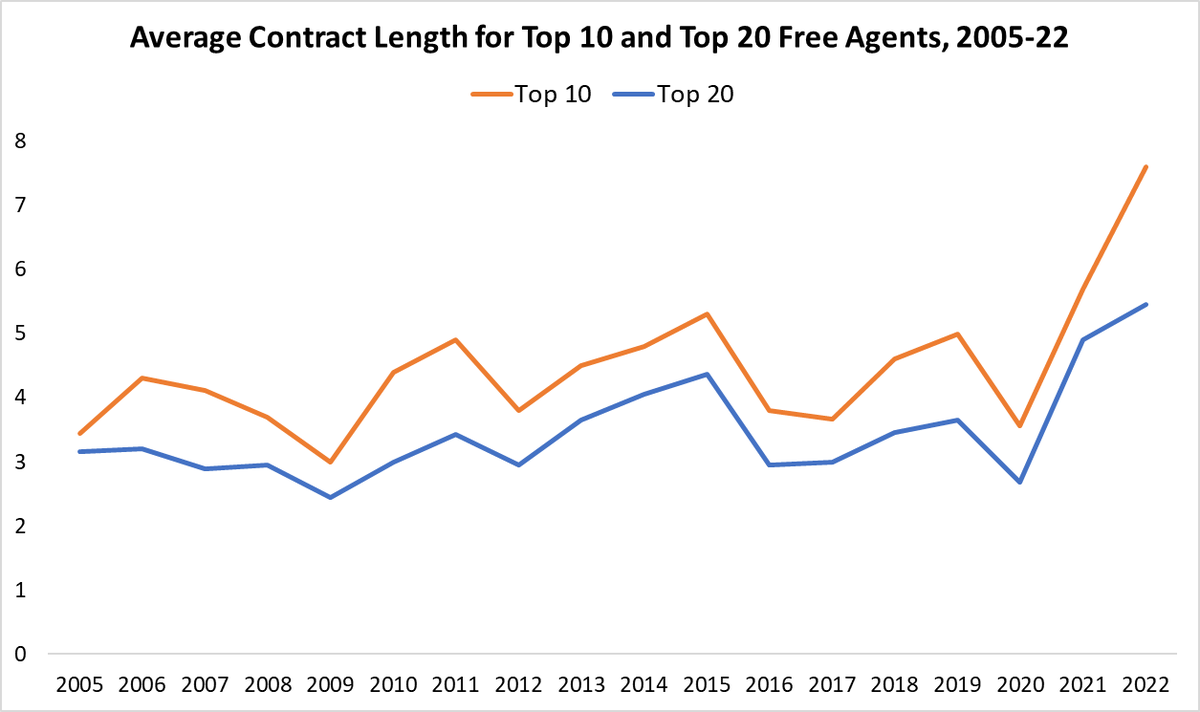Can Jim Crane Sustain the 5-Year Rule?
The Astros front office has chosen not more than 5 free agent years. But the market is changing to more long term contracts. Will Jim Crane have to shift with the market?
Last month, the Astros announced that they had signed one of their star players—Cristian Javier—to a contract extension of 5 years.
In discussing the extension, I noted how similar it was to the contract extension that the Astros had signed with Yordan Alvarez and Alex Bregman—offering “an extension that covers…three arbitration seasons and a short number of free agent years. The team locks down a player for the next several seasons without taking a big risk on his long-term health and future.”
Since then, attention has turned to attempts to sign Kyle Tucker and Framber Valdez to extensions, but the deadline for those seems to have come and gone without an extension for either player.
What Is The Five-Year Rule?
Why were the Astros able to sign Javier but not Tucker and Valdez? It most likely has to do with the type of extension offer the front office likes to give to players—one that covers a player’s arbitration years and a short number of seasons in which the player is eligible for free agency.
Javier, like Alvarez and Bregman, seems to have taken the front office up on such an offer. I assume that the Astros made offers of a similar type to Tucker and Valdez, but they were not accepted. Those two think they can make more money as free agents than they can get from the Astros.
The Astros’ choice to offer middle term extensions to players is not new. It reflects what is now a well established pattern during Jim Crane’s ownership. The extensions that Alex Bregman, Yordan Alvarez, and Jose Altuve (twice) signed with the team fit the same pattern.
When it comes to players who have entered free agency, the longest contract that Jim Crane has signed covers five years of free agency. These are the deals that Jose Altuve and Lance McCullers signed.
The pattern of limiting contracts to five years of less is so strong that I have dubbed this the five year rule. And Jim Crane has never violated the five year rule.
The five year rule has clear costs. The front office’s unwillingness to sign a player well into his mid to late 30s is a one of the reasons that Gerrit Cole, George Springer, and Carlos Correa went elsewhere for big free agent paydays.
But the Astros have withstood the departures of those stars and others to free agency through its ability to developed a new young core in players from its own farm system. The ability to develop young players like Valdez, Tucker, Javier, Alvarez, and Jeremy Pena is why the Astros were able to keep going deep in the playoffs over the last few seasons and win the 2022 World Series.
Thus, one reason that Jim Crane has chosen not to sign players—whether homegrown or on the free agent market—to long-term contracts. He has not had to sign such players.

The Market for Baseball Players is Changing
But this offseason created the biggest challenge to Jim Crane’s five year rule. As Ben Lindberg wrote at The Ringer, the “theme to this MLB offseason [is] superstars signing contracts that run through years so far in the future that they sound like science fiction.”
Trea Turner, Xander Bogaerts, and Manny Machado all signed contracts that will pay them through the 2033 season. Aaron Judge signed a nine-year contract that will pay him through his age 39 season. Brandon Nimmo, the top outfielder on the market, signed an eight-year deal. Dansby Swanson got a seven year deal, Carlos Rodon got six years, and Andrew Benintendi, Kodai Senga, and Willson Contreras—to whom the Astros offered a three year contract—signed each signed a five-year deal.
Long-term contracts were in this offseason.
This chart created by Lindberg based on the rankings of the Top 20 free agents developed by MLBTradeRumors.com provides numeric certainty to what you felt reading baseball news this off-season. Teams were indeed signing players to longer contracts.
Why have teams chosen to give longer contracts? According to Alden Gonzalez and Jesse Rogers of ESPN.com, “The most popular reason given to explain the plethora of long-term deals was simply that lengthening out a contract is an easy way to minimize present-day costs.”
Extending contracts out to a player’s age 40 season is primarily an effort to reduce a team’s annual budget and reduce a team’s luxury tax liability. Long terms contracts reduce a contract’s Average Annual Value.
From a player’s standpoint, the appeal of long-term contracts is obvious. These contracts often pay them the most total value and guarantee a player a large salary well into their late 30s when they are least valuable on the free agent market.
The Five Year Rule Stands
Jim Crane’s response to this trend has been, so far, to change nothing. As noted, he gave Cristian Javier the same type of extension that he gave previously to Alvarez, Bregman, and Altuve.
But when it came to Tucker and Valdez, who have more value on the free agent market than Javier, the front office was not able to sign the players. We don’t have any details on what Tucker and Valdez were looking for, but we can guess that it was for more years than Crane and new General Manager Dana Brown preferred.
Brown discussed the matter last week, but seemed to be channeling Crane when he said “Ten years for me, I’m just very uncomfortable.” Brown’s former employer, the Atlanta Braves, had given a ten year contract to Austin Riley, so his previous bosses were not uncomfortable with such a long deal. But his new employer is.
“I’d rather extend guys in their (arbitration) years as opposed to waiting until they’re free agents and doing long-term deals,” Brown continued. “I just don’t ever want to put the team, organization and ownership under that type of pressure. We know players change and I’m just not comfortable … these long contracts feel very uncomfortable to me.”
Long Term Contracts are Risky, But So Is The Five-Year Rule
Brown’s explicit and Crane’s implicit discomfort with such long-term deals is understandable. It is risky to sign players to long-term contracts well into their declining year. We don’t know how these players will age, but most baseball players tend to peak in their mid-to-late 20s and to decline as they age. And the longer the contract, the greater the chance that the player suffers a big injury that keeps them out for a long time, or a bunch of nagging injuries that harm their production.
But there is risk in not signing players to long-term contracts with the Astros. The risk is two-fold. First, the player who does not sign a long-term contract with the Astros is likely to sign one with another team. And the second risk is that the player development system will not have a replacement major league ready when the star player signs as a free agent with another team.
The Astros have avoided the downsides of their choice not to sign players to long term contracts because they keep developing young stars. If the Astros can continue to do that, they can maintain the five year rule. But that is a big if.
Jim Crane is avoiding one risky path. But he cannot avoid taking a risky path. When you are a successful baseball club, they are the only paths that you can take.





Eventually they’ll have a huge hole they can’t fill within the organization, maybe Tucker or Valdez, and a decision will have to be made. My guess is they stay status quo. We’re already seeing that to some degree with Aledmys signing with Oakland and filling that role with Hensley and Dubon instead of a more experienced utility player.
The Astros have been able to maintain being a player as an organization in the postseason. They are a marquee organization at this current point in time. But will they continue when they continually have their talent to walk out the door? He has made plenty of money in the postseason, but hasn’t been willing to part with that money. I don’t think Astros fans are going to be very thrilled Knowin we are out of contention of signing free agents, especially our players. As of now, you can’t argue with success. So he’s been able to get by losing Marquee free agents. We can’t be one of the organizations unwilling to go after someone high profile. we’re not going to keep up with the league that way. Hopefully, the analytics department also presents him with these changes in free agency and the length, and that will reconfigure his approach.